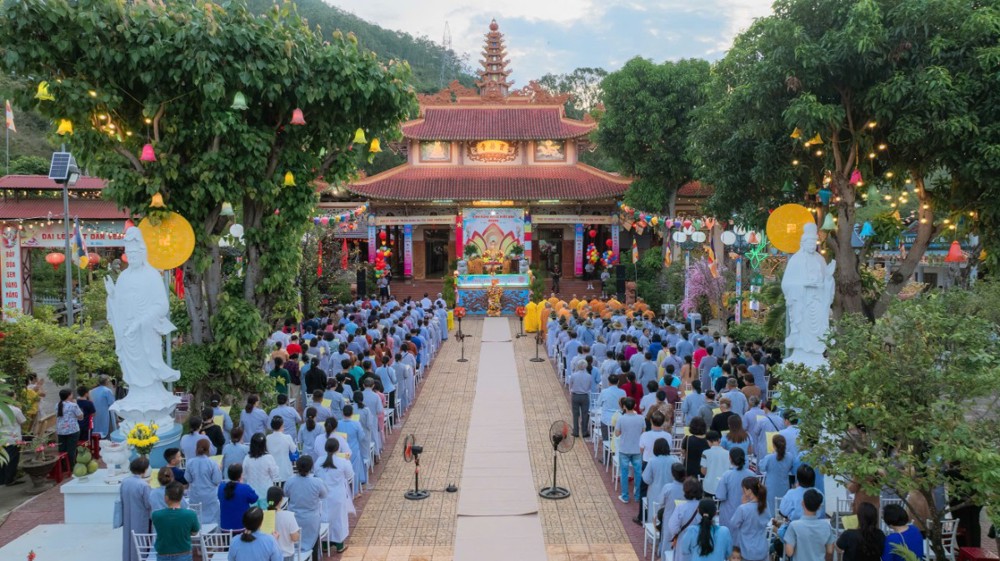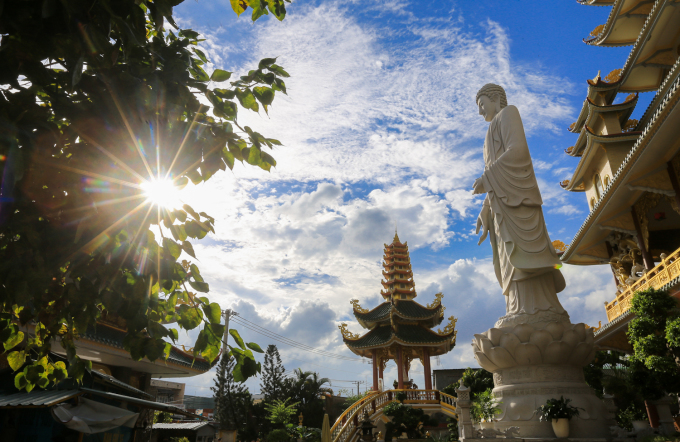Van Duc Pagoda
1. Overview
Vạn Đức Pagoda is one of the most prominent and respected Buddhist temples in Hội An, Quảng Nam Province. Known for its peaceful atmosphere and spiritual depth, the pagoda serves as an important place of worship and community gathering for both monks and laypeople. Though not as widely known as Chùa Cầu, Vạn Đức offers visitors a more traditional and immersive Buddhist experience, away from the more touristic parts of the old town.
2. Location
Vạn Đức Pagoda is located on Phan Chu Trinh Street, just a short distance from the bustling center of Hội An Ancient Town. While it is close to popular attractions, the pagoda is slightly hidden from the main tourist flow, making it a peaceful retreat for those seeking reflection and quiet.
Its central yet serene location makes it a meaningful stop for both cultural exploration and spiritual enrichment.
3. Architecture and Features
The pagoda showcases classical Vietnamese Buddhist architecture, characterized by harmony, balance, and reverence:
-
The main hall (Chánh điện) features statues of Shakyamuni Buddha, Amitabha Buddha, and various bodhisattvas, surrounded by candles and offerings.
-
The gate and roof are adorned with traditional dragon carvings, lotus patterns, and Buddhist symbols.
-
Inside the temple, visitors will find a peaceful prayer space, incense altars, and murals depicting scenes from the life of the Buddha.
-
The courtyard is filled with bonsai trees, flowers, and benches, creating a space for meditation and relaxation.
Though not extravagant in scale, the temple's details reflect the devotion and artistry of the local Buddhist community.
4. Historical Significance
Vạn Đức Pagoda has long served as a spiritual center for Buddhists in Hội An, especially during major religious festivals such as Vesak (Buddha’s Birthday) and Vu Lan (Ghost Festival). The name "Vạn Đức" means "Ten Thousand Virtues," symbolizing the path toward enlightenment through good deeds and mindfulness.
The temple is not just a religious site but also a place of education, where monks and followers study Buddhist teachings and practice meditation.
Through decades of social and historical change, Vạn Đức Pagoda has remained a steadfast presence in the community, offering spiritual guidance and cultural continuity.
5. How to Visit
-
Access: Vạn Đức Pagoda can be reached easily by walking, cycling, or by taxi from any part of Hội An’s old town.
-
Opening Hours: The temple is open daily, especially in the morning and early afternoon.
-
Entrance: There is no entrance fee, but donations are appreciated to support temple maintenance.
-
Etiquette: Visitors should dress modestly, remove shoes before entering the main hall, and speak quietly while on the premises.
Guided tours may not always include this temple, making it an ideal destination for those seeking an authentic, off-the-beaten-path experience.
6. Experience and Meaning
Visiting Vạn Đức Pagoda offers a chance to experience living Buddhist traditions in a calm and respectful environment. Unlike the busy attractions of the old town, the pagoda provides space for inner peace, silent reflection, and a deeper connection to Vietnamese spiritual culture.
Whether lighting incense, observing the monks in daily practice, or simply admiring the detailed carvings and peaceful gardens, visitors can find both inspiration and tranquility here.
Vạn Đức Pagoda reminds us that in the heart of Hội An’s historic charm lies a strong spiritual core that continues to nurture the local soul.



